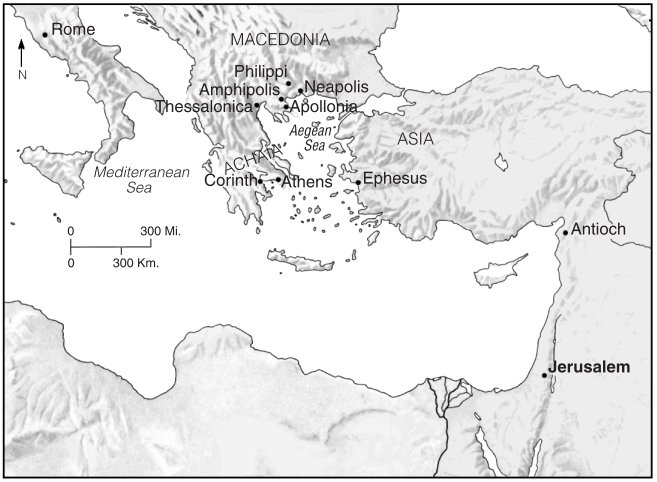
Paul Travels to Macedonia
When Paul received the “Macedonian call,” he went to Neapolis and on to Philippi in Macedonia.
Open Bible Data Home About News OET Key
OET OET-RV OET-LV ULT UST BSB MSB BLB AICNT OEB WEBBE WMBB NET LSV FBV TCNT T4T LEB BBE Moff JPS Wymth ASV DRA YLT Drby RV SLT Wbstr KJB-1769 KJB-1611 Bshps Gnva Cvdl TNT Wycl SR-GNT UHB BrLXX BrTr Related Topics Parallel Interlinear Reference Dictionary Search
A B C D E F G H I J K L M N O P Q R S T U V W XY Z
MACEDONIA
Roman province in NT times, beginning as a kingdom in the seventh century BC. Little is known about the first several centuries of its history, but with the coming to power of the Greek king Philip II (359–336 BC), and especially of his son Alexander III (the Great, 336–323 BC), Macedonia became a world power. After Alexander’s death, the empire was divided among his successors into several regions, one of them the original Macedonian kingdom. Instability held sway for the next 150 years, and in 167 BC Macedonia came under Roman rule. Initially divided into four districts by the Romans (Acts 16:12 is a possible reference to this division), this territory was made into a Roman province in 14 BC with Thessalonica as its capital. Briefly, from AD 15–44, Macedonia was combined with Achaia and Moesia (other parts of Greece) into one large province; however, in AD 44, the three were again separated. Macedonia’s importance continued through the Roman era, and it remained a separate entity down to modern times, though it was part of Yugoslavia from 1945 to 1991.
The Roman province of Macedonia included the northern region of Greece and southern sections of present-day Albania, Bulgaria, and the Fomer Yugoslav Republic of Macedonia. Noted for its gold, silver, timber, and farmlands, the region also served as a land route for trade between Asia and the West. Shortly after the Romans incorporated Macedonia as a province, they built the Via Egnatia, a paved road over 500 miles (804.5 kilometers) long, running from the Adriatic coast to the Aegean, no doubt traveled by the apostle Paul as he moved through the Macedonian cities of Neapolis, Philippi, Amphipolis, Apollonia, and Thessalonica (Acts 16:11-12; 17:1).
The gospel was introduced to Europe by way of Macedonia when Paul responded to a vision while on his second missionary journey (Acts 16:9-12). Details of that work, centering in Philippi and Thessalonica, are described in Acts 16:11–17:15. On his third journey, though delayed initially (19:21-22), Paul later returned to Macedonia, and again after a stay in Corinth (20:1-3; see 1 Cor 16:5; 2 Cor 1:16 and 2:13 for other references to Macedonia visits).

Paul Travels to Macedonia
When Paul received the “Macedonian call,” he went to Neapolis and on to Philippi in Macedonia.
Macedonian believers played an important part in the collection Paul gathered for the poor in Jerusalem (Rom 15:26; 2 Cor 9:2-4); Paul commended them for their liberality (2 Cor 8:1-2). He also praised them for their example of faith, even in times of adversity (2 Cor 7:5; 1 Thes 1:7), and for their love of others (1 Thes 4:10). Some of the Macedonians worked directly with Paul in carrying out the gospel commission (Acts 19:29; 20:4; 27:2), and he addressed letters to churches in two Macedonian cities, Philippi and Thessalonica.
See also Greece, Greek.